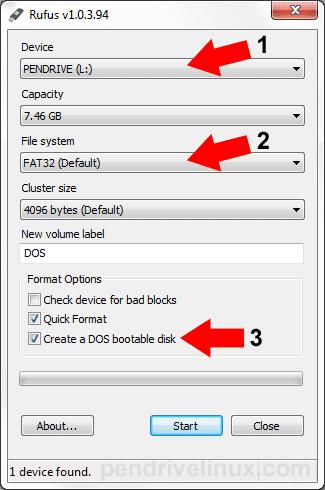Complete List of MS-DOS Commands
2402
30/11/2021

DOS is no longer widely used, but you may still need to boot into the DOS environment at some point. Windows' built-in formatting utility allows you to create floppy drives that can be booted via DOS, but not USB drives. This is the solution to this problem.
RELATED:
Do You Need to Update Your Computer's BIOS?
DOS may be a relic of the past, but you wouldn’t know that from reading instructions written by manufacturers for
BIOS updates
, firmware-updating utilities, and other low-level system tools. They often require you to boot into DOS to run the utility. We once formatted our floppy disks with MS-DOS using the format utility built into Windows, but most computers don’t have floppy disk drives anymore. Many no longer even have optical disc drives. Fortunately, there’s a free third-party utility that lets you quickly create a DOS-bootable USB drive.
Step One: Use Rufus to Format Your USB Drive
Windows’ built-in formatting utility doesn’t allow you to select the “Create an MS-DOS startup disk” option when formatting a USB drive—the option is grayed out in Windows 7 and not available at all in Windows 8 and 10. Instead, we’ll be using a tool named Rufus. It’s a fast, free, lightweight application that includes FreeDOS.
RELATED:
What Is a "Portable" App, and Why Does It Matter?
First, download
Rufus
and launch it. Rufus is a
portable app
that doesn’t require any installation—you will see the Rufus application as soon as you launch the downloaded .exe file.
Advertisement
Creating a DOS-bootable USB drive in Rufus is simple. First, connect your USB drive to the computer and select it in the “Device” dropdown menu.
Note that this process will erase the contents of your USB drive, so make sure you’ve backed up any important files on the USB drive first.
RELATED:
What's the Difference Between FAT32, exFAT, and NTFS?
From the “File System” dropdown menu, choose the “FAT32” format. The DOS option requires FAT32 and isn’t available for the other file system options like
NTFS, UDF, and exFAT
.
Select the “Create a bootable disk using” option and then choose “FreeDOS” from the dropdown menu next to that option.
Click the “Start” button to format the disk and copy the files necessary to boot into FreeDOS.
The formatting process should be extremely quick—usually a matter of seconds—but it ca

Follow-up question: for those who feel MiSTer needs more coverage, what topics would you like to see covered? https://t.co/lowgDkhS1U
— Porkshop Express Mon Jun 07 15:52:36 +0000 2021
Step Two: Copy Your Files Over
You have probably created this boot drive because you have a DOS-based program to run, such as a BIOS update utility or another low-level system program. To actually run these files from DOS, you will need to copy them over to your newly-formatted USB drive. For example, you may have a BIOS.BIN and FLASHBIOS.BAT file you need to run in DOS. Copy these files into the root directory of the USB drive after formatting it.
Step Three: Boot Into DOS
RELATED:
How to Boot Your Computer From a Disc or USB Drive
You can now boot into DOS by restarting your computer with the USB drive connected. If your computer does not automatically boot from the USB drive, you may need to
change your boot order
or use a boot menu to select the device from which you want to boot.
Once you are in DOS, you can run the program you copied to your USB drive by typing its name at the DOS prompt. Follow any instructions provided in the manufacturer’s documentation to run the application.
RELATED:
How To Use DOSBox To Run DOS Games and Old Apps
These utilities still use DOS to ensure they have low-level access to the hardware without any other programs interfering or Windows getting in the way. This helps ensure BIOS updates and other low-level operations work properly. You also could use a bootable USB drive to run old DOS applications, but that tends not to work so well. You would be much better off
using DOSBOX to run old DOS games and other applications
.
READ NEXT
›
How to Remove Suggestions from Chrome’s New Tab Page
›
How to Freely Move Pictures in Microsoft Word
›
How to Use Alexa Offline with Smart Home Devices Using Echo
›
How to Remove a Background in Photoshop
›
How to let AirPods notify incoming calls and notifications on iPhone
